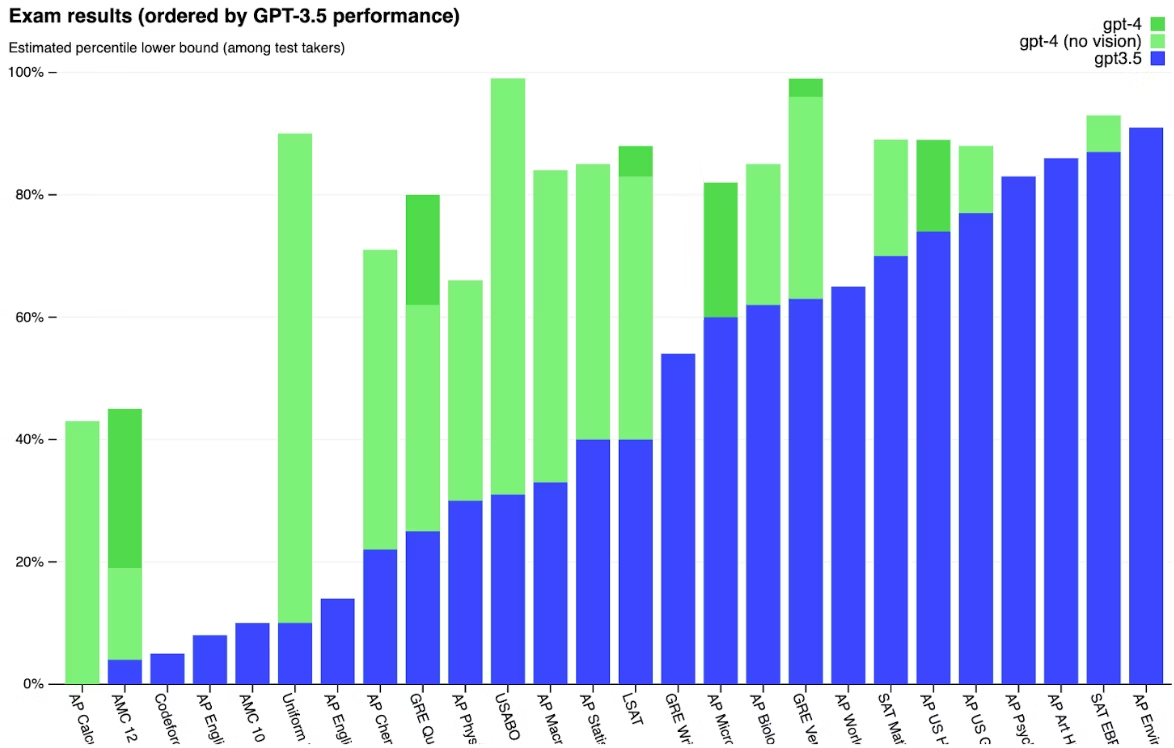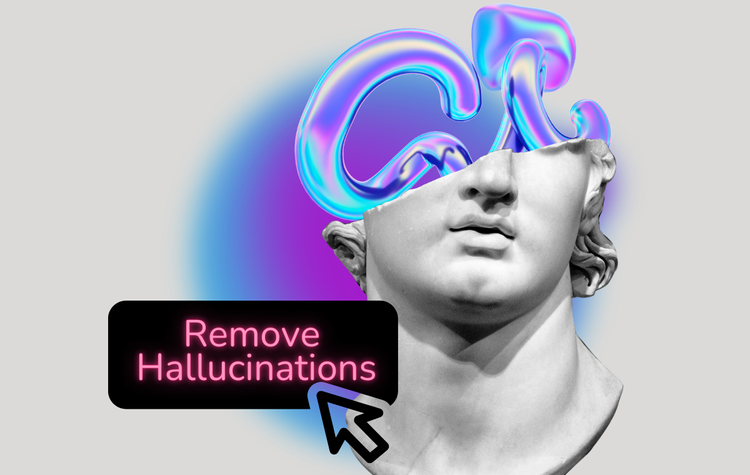GPT 3.5 Chatbots: Balancing Cost and Quality
While GPT-3.5 based chatbots are functional chatbots, they fall significantly short of chatbots that use GPT-4. Businesses that require the highest level of accuracy in the chatbot should turn to GPT-4 based chatbots.

The demand for cost-effective AI chatbot solutions is soaring. With AI advancing rapidly, businesses are eager to adopt chatbots to boost customer support and streamline operations. Amidst the continuous evolution of artificial intelligence, the AI chatbots that utilize GPT 3.5 are a significant contender.
GPT-3.5 has effectively closed the divide between its forerunners, GPT-2 and GPT-3, and the successor, GPT-4.
In this article, we'll define a chatbot, GPT 3.5, and GPT3.5 chatbots. We'll also explore how GPT3-based chatbots fit in the AI landscape and how they strike a balance between cost and quality.
Defining a GPT 3.5 Chatbot
What is a chatbot?
Chatbots, or AI chatbots, are software applications that allows users to type in or speak a question or query. The chatbot then communicates with a back-end server.
The chatbot is also responsible for maintaining the context of a conversation. To achieve this, the chatbot will send all questions and responses to the back end. This way, the back-end system "knows" what the user has already asked and what the prior responses were.
The chatbot displays the response to the end user. The user can then ask another question and continue the existing conversation, or start a different conversation.
What is GPT-3.5?
GPT-3.5 and GPT-3.5 Turbo are Large Language Models (or LLM) owned and operated by OpenAI. LLMs are deep learning natural language/machine learning models that have trained massive amounts of data. As a result, they are very good at understanding questions and predicting the next best word in a conversation.
Because LLMs can generate a relevant response to any question, they are part of a broader category of solutions called generative AI. Generative AI solutions are artificial intelligence systems that can generate original text, images, videos and more.
GPT-3.5 receives the user input (or the whole conversation) from the chatbot. It analyzes the question, generate text responses, and sends the response back to the chatbot.
What's a GPT-3.5 Chatbot?
A GPT3.5-chatbot is a software user interface that allows users to type in or speak a question or queries. It then communicates with OpenAI's GPT-3.5. GPT-3.5 analyzes the question, formulates a response, and sends it back to the GPT-3.5 chatbot.
ChatGPT is the most recognized GPT-3.5 chatbot. OpenAI owns and operates both ChatGPT and GPT-3.5.
Note, however, the chatbot and LLM are 2 different software systems. Vendors can build chatbots that communicate with GPT-3.5. As such, there are many GPT-3.5 chatbots in addition to ChatGPT.
Understanding Where GPT-3.5 Chatbots Fit In
Understanding the importance of GPT-3.5 chatbots requires a journey through the evolution of LLMs and chatbots.
Google researchers first introduced the transformer architecture 2017. OpenAI shipped GPT-1 in 2018, and they continued to improve their models, ultimately resulting in GPT-3.5 launching in March 2022.
GPT-3.5 contains 175 billion parameters. This gives GPT-3.5 an uncanny ability to process language and create near human-like responses.
ChatGPT, released in November of 2022, highlighted GPT-3.5's natural language capabilities.
Many consider ChatGPT and GPT-3.5 to be the first example of a computer (almost) passing the Turing Test. The Turing Test is when a human being cannot tell the difference between a human generated response or machine generated response. As a result of this uncanny ability, ChatGPT surpassed over 100 million users just 2 months after launch.
To this day, ChatGPT uses GPT-3.5 for its back-end intelligence. Users can pay a $20/month subscription fee to access ChatGPT Plus. ChatGPT Plus subscribers to use either GPT-3.5 and GPT-4 for back-end processing.
GPT-3.5 versus GPT-4.0: Pros and Cons
For customers looking to build or use a chatbot GPT3.5 has two key pros over GPT-4. They are:
- Speed: Because GPT-3.5 is a smaller model than GPT-4, GPT-3.5 processes queries and generates responses faster than GPT-4; and
- Cost: OpenAI currently charges 20 times more to use GPT-4 than GPT-3.5.
Chatbots that use GPT-3.5 have several cons relative to chatbots that use GPT-4.0. They include:
- Smarts: GPT-4.0 is "smarter" that GPT-3.5. It has a better understanding of complex, nuanced prompts. GPT-4.0 also has more relevant, accurate, and creative responses. Per OpenAI, GPT-4.0 performed better than GPT-3.5 in multiple standardized tests:

Source: OpenAI
- English only versus multiple languages: GPT-3.5 only speaks English. GPT-4.0 understands and responds in nearly 100 languages. GPT-4.0's English accuracy is 85.5%, compared to 70.1% for GPT-3.5.
Source: OpenAI
- Less human-like responses: GPT-4’s responses are more convincingly human relative to GPT 3.5.
- Text only versus Text and Images: GPT-3.5 can only have text as input. GPT-4 can have images as input.
- Personalities: Operators of GPT-4 chatbots can give them more of a personality in their responses. These personalities can help the chatbot be more consistent with the brand tone or voice.
- Less Short-Term Memory: GPT-3.5 can remember up to 8,000 words per conversations. On the other hand, GPT-4 can remember up to 64,000 words per conversation.
While GPT-3.5 based chatbots are functional chatbots, they fall significantly short of chatbots that use GPT-4.
Businesses that require the highest level of accuracy in their chatbots will likely find that GPT-3.5 chatbots don't meet their expectations.
Why Choose Gleen AI?
In the competitive world of AI chatbot solutions, Gleen AI stands out as a market leader.
Gleen AI is a generative AI chatbot for customer service.
It is compatible with any LLM. Gleen recommends GPT-4 to its customers. If, however, you are budget constrained and are OK with the quality tradeoffs, Gleen AI can also work with GPT-3.5. Gleen AI can also work with self-hosted LLMs.
Gleen AI can ingest your proprietary knowledge base, even if your knowledge is fragmented and imperfect. Gleen AI ingests structured and unstructured data. Gleen AI can crawl knowledge from web sites, wikis, product documents, help desk solutions, and community bulletin boards.
Gleen AI is extremely accurate, i.e., it does not hallucinate and only provides answers from the supporting documents. The LLM represents only 20% of Gleen's tech stack. The rest of Gleen's tech stack focuses on preventing hallucination.
Gleen AI can also be implemented across all your customer support channels, including live chat support, email support, Slack support, Discord support, and SMS/text support.
In addition, Gleen AI can be deployed in agent assist mode, where Gleen AI searches your knowledge base and generate a draft response for agents. Agents can edit the response and send it to the customer. Gleen AI will use the edited response to improve future responses.
Conclusion
In the realm of AI chatbots, the GPT-3.5 chatbots represent a bridge between affordability and performance.
Even with their performance limitations, their cost effectiveness may make them attractive for some businesses.
Gleen AI stands out as a leading generative AI chatbot. Gleen AI works with both GPT-3.5 and GPT-4. Most importantly, Gleen AI doesn't hallucinate.
Are you ready to upgrade your customer support with a generative AI chatbot? Create a free custom chatbot using Gleen AI now, or request a demo of Gleen AI.



